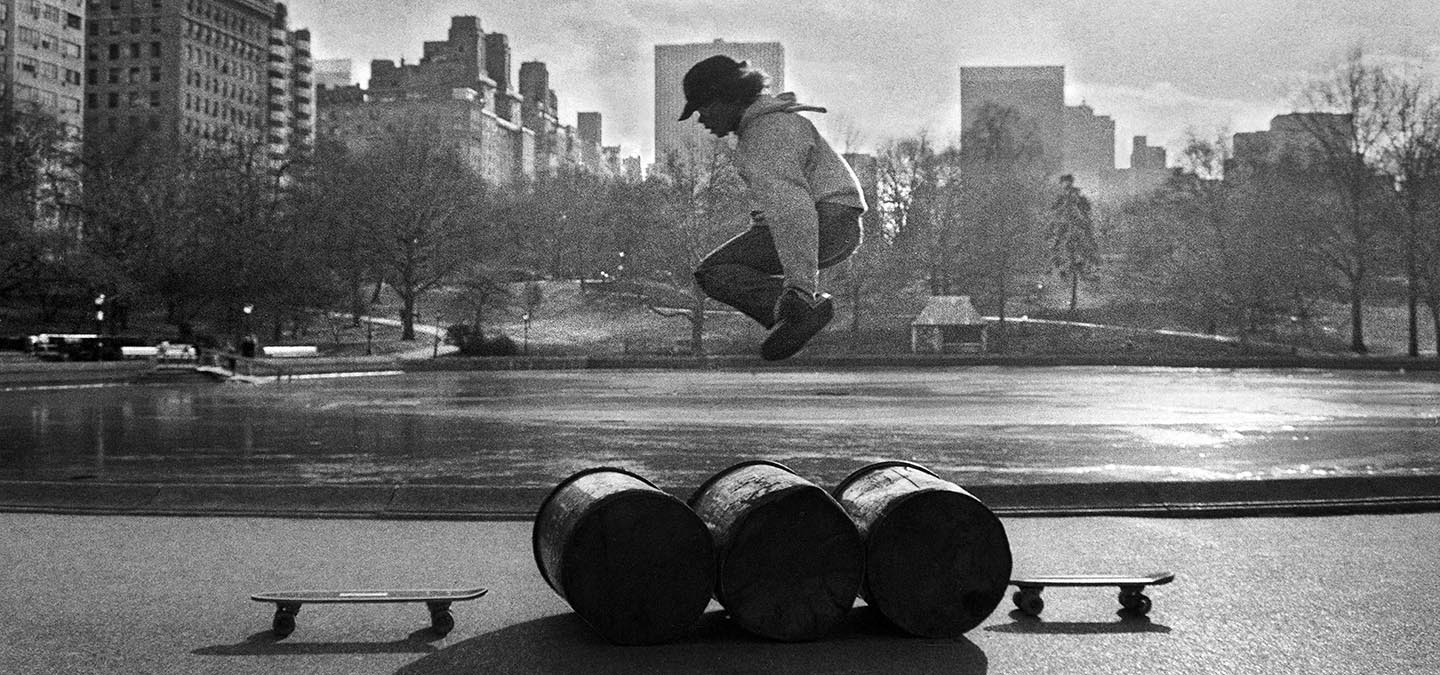
Running the Streets: Martha Cooper’s New York State of Mind
- September 25, 2020
Author: Miss Rosen
for Urban Nation Museum (UN), Berlin
Freedom, creativity, and innovation — these are the hallmarks of Martha Cooper’s journey around the globe over the past 60 years. Hailing from a long line of strong, independent women dating back to her maternal great aunt, Henrietta Szold, a prominent activist inducted into the American Women’s Hall of Fame, Cooper grew up in a family of feminists empowered to follow their destinies.
At the tender age of five, Cooper was instilled with a profound sense of autonomy when her mother taught her to walk a mile to kindergarten on her own through hometown Baltimore. “My mother showed me the first day,” Cooper says. “The next day she followed behind to make sure I got it right, then that was that. I grew up very free.”
Cooper’s penchant for adventure
Cooper took her penchant for adventure to new heights in 1965. After completing her work in the Peace Corps to study ethnology at Oxford University, she went on the ride of her life, traveling from Bangkok to London by motorcycle alone. After graduating, she returned to the U.S. to catalogue artifacts at Yale’s Peabody Museum of Natural History. Soon bored working behind a desk, Cooper yearned to be back in the field.
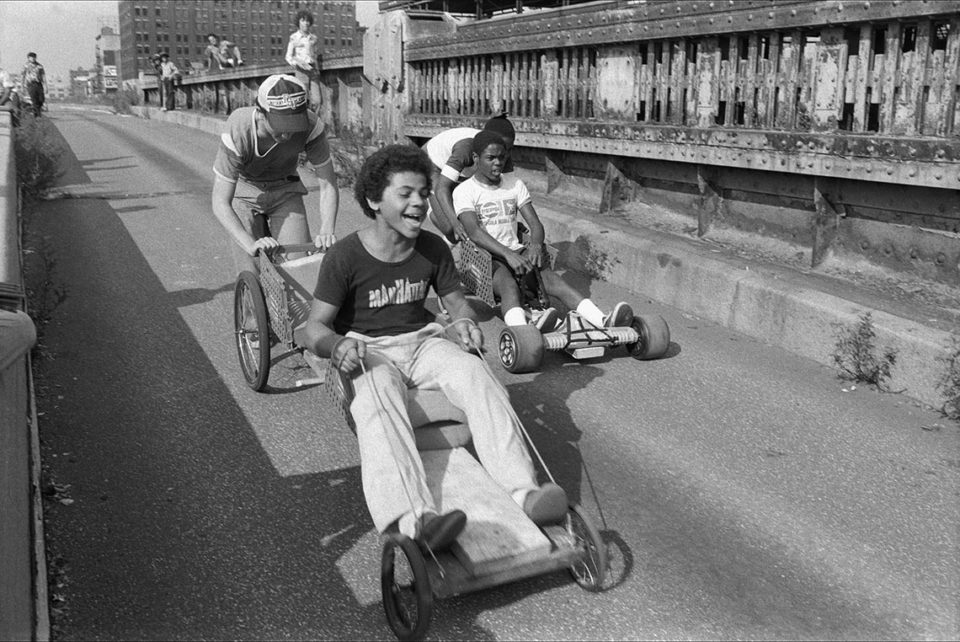
Determined to pursue a lifelong love of photography, Cooper became the first woman photo intern at National Geographic before taking a job at The Narragansett Times. But life on the shores of Rhode Island was far too placid for her taste. In 1975, Cooper moved to New York City to try to become a newspaper photographer. After years of white flight and benign neglect, the city teetered on the brink of bankruptcy while landlords hired arsonists to torch their properties to collect insurance policies, laying entire neighborhoods to waste.
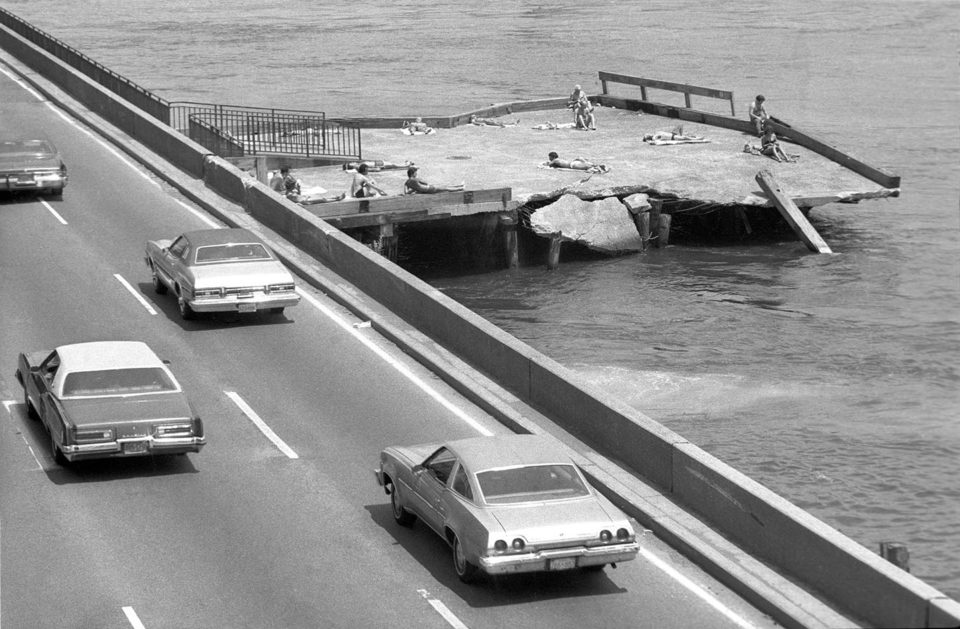
MARTHA COOPER’S NEW YORK
The decadent, derelict landscape had a distinctly outlaw feel, creating a vibrant cultural oasis where anything was possible. Fully in her element, Cooper had a blast as the first woman staff photographer at the New York Post in 1977. With a press pass to cross police lines and press license plates on her car allowing her to park anywhere at any time, Cooper cruised the five boroughs in a beat-up Honda Civic on assignment, with no fear of pulling a U Turn in the middle of the street to hop out for a quick shot.
Strapped with a two-way radio connected to the City Desk, Cooper photographed everything from crime to celebrities. But she recognized that freedom of the press wasn’t without consequence in a lawless town. “They sent me there with a reporter to a drug supermarket on Avenue A,” she recalls. “We saw all these people going in and out of an abandoned building and I was like, ‘You want me to go in there and take a picture — are you crazy?’”
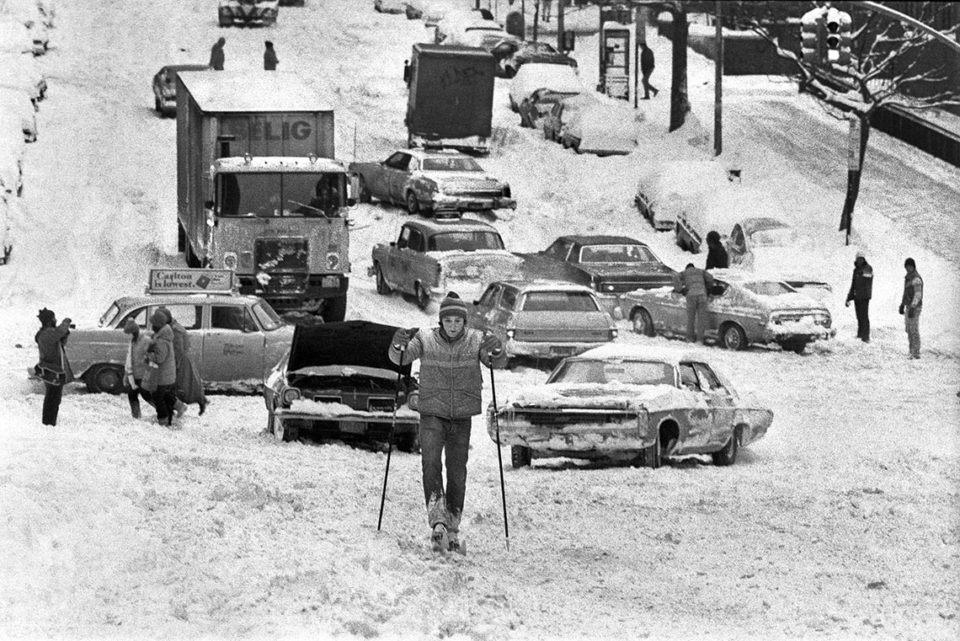
Between assignments Cooper reveled in making “Weather Shots,” a series of stand-alone images that could appear as a full-page picture in the paper later published in the book New York State of Mind. In a city fueled by extremes, weather was the perfect metaphor to illustrate how tough, resilient, and adaptable its residents were. Cooper’s eye for the quirky facets of city life revealed itself in quintessential scenes of old men playing dominoes at card tables on the block, kids cavorting in streams of cool water spouting from an open fire hydrant on a sweltering summer day, and an intrepid New Yorker donning a pair of skis to traverse snow-laden streets.
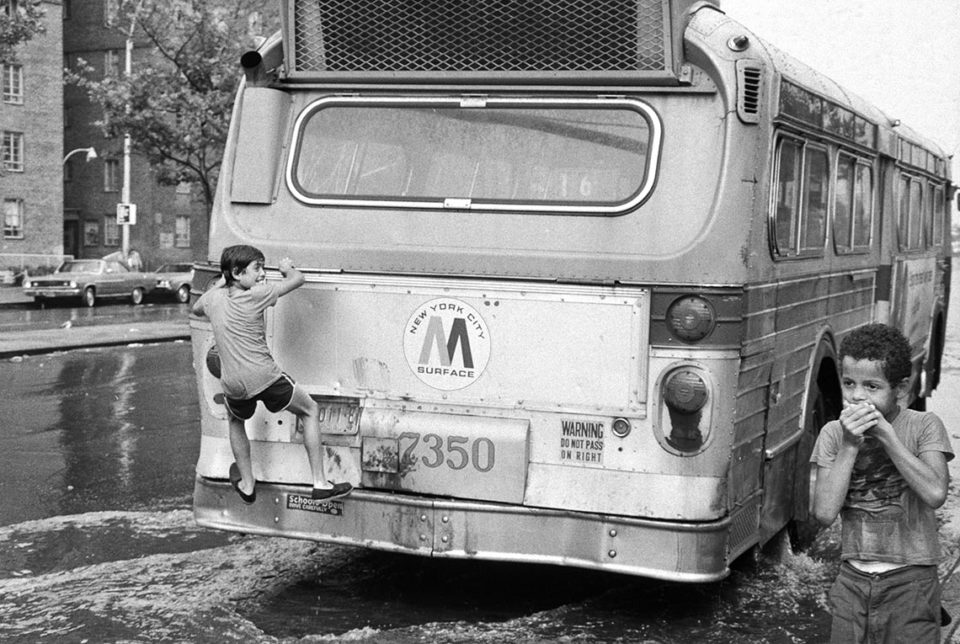
Kings of the street
At the same time, Cooper documented a golden era when kids ruled the streets in a series of photographs later published in the book Street Play. The project began after Cooper visited Haiti and saw kids making cars out of tin cans. She returned to New York curious to see if anything similar was happening in the Lower East Side, a vibrant albeit decimated neighborhood not far from the Post’s downtown office. Left to their own devices, the kids in Cooper’s photos were fearless, leaping off fire escapes onto abandoned mattresses and riding the back of the bus, making games and hand-fashioned toys from debris-strewn lots. “The kids had a lot of freedom and there were a lot of places that were not fenced off,” Cooper says. “It harkened back to my own childhood.”
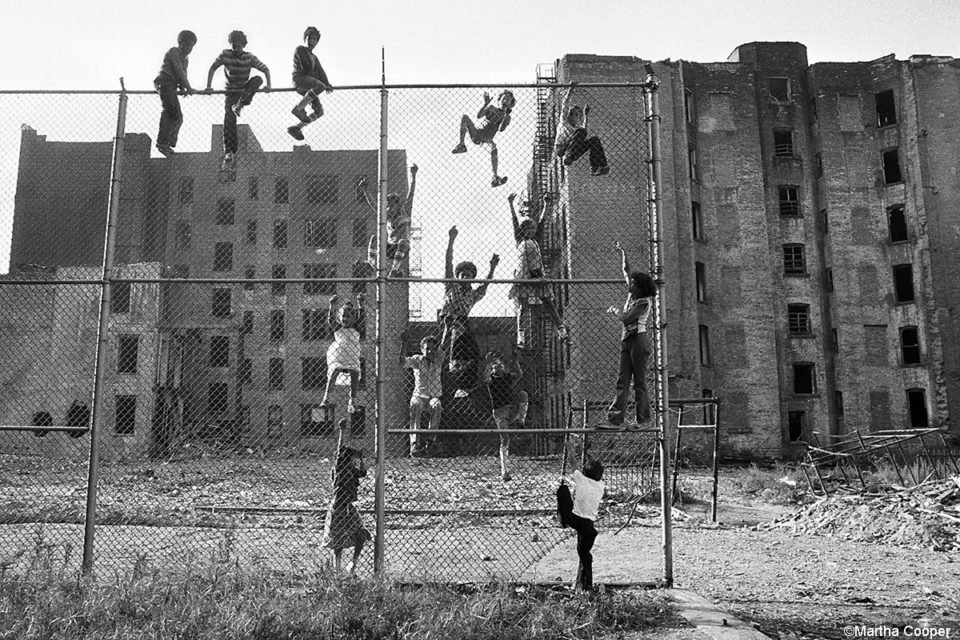
Trip down memory lane
Recently Harlem Slim, a New York blues musician, contacted Cooper to ask if he could use her photo of a group of kids climbing a chain link fence as the cover of his next album, saying he was one of the kids in the picture. Cooper said she would give him permission if he could provide a description of what he remembered from that day. In an email, Harlem Slim remembered the moment with perfect clarity, recollecting his time at a day camp that allowed kids to run around the city with a slightly older teen as chaperone.
“So many neighborhoods from the Upper West Side to the Lower East had those fenced off lots of construction rubble. They became our playground built (or destroyed) to fuel creativity,” Harlem Slim recalls. “At the time this photo was taken I was a very shy kid and wanted desperately to be like the cool big kids. I knew that making it to the third row of fence would put me in — so I pushed forward without looking down. What I love about your photo is that it perfectly captures my moment of regret and fear. I don’t think anyone else sees it that way, but that’s the beauty of a photo. I never made it to the top on that climb. I began climbing down the way I came up forcing the kids under me to do the same. Straddling the top like the big kids was out of my league and I had seen the consequences of foolishness so I played it safe that day.”
Live changing moment
Cooper’s time making these photographs inadvertently changed her life when she met a child named Edwin who kept pigeons on a roof. He also wrote graffiti, going by the name HE3. Cooper, already a fan of political graffiti, couldn’t read the writing on the wall until Edwin broke it down to her.
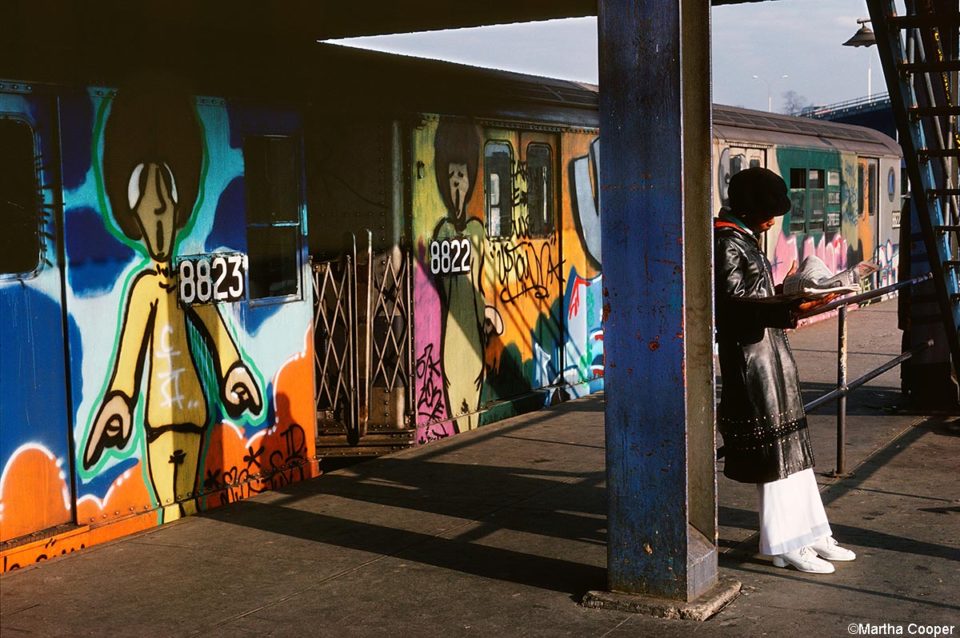
“It was like the Rosetta Stone,” Cooper says. “He told me, ’My name is HE3: here it is in my notebook and I’m putting it on a wall.’ I was like, ‘Oh I get it. These are names.’ This was a revelation: you could recognize tags. I got extremely lucky that HE3 knew DONDI because he said, ‘I can introduce you to a king.’” And from that one encounter, history was made. In 1980, Cooper quit her job at the New York Post to document graffiti full time, never for a moment imagining the work she would do would go on to change the world.